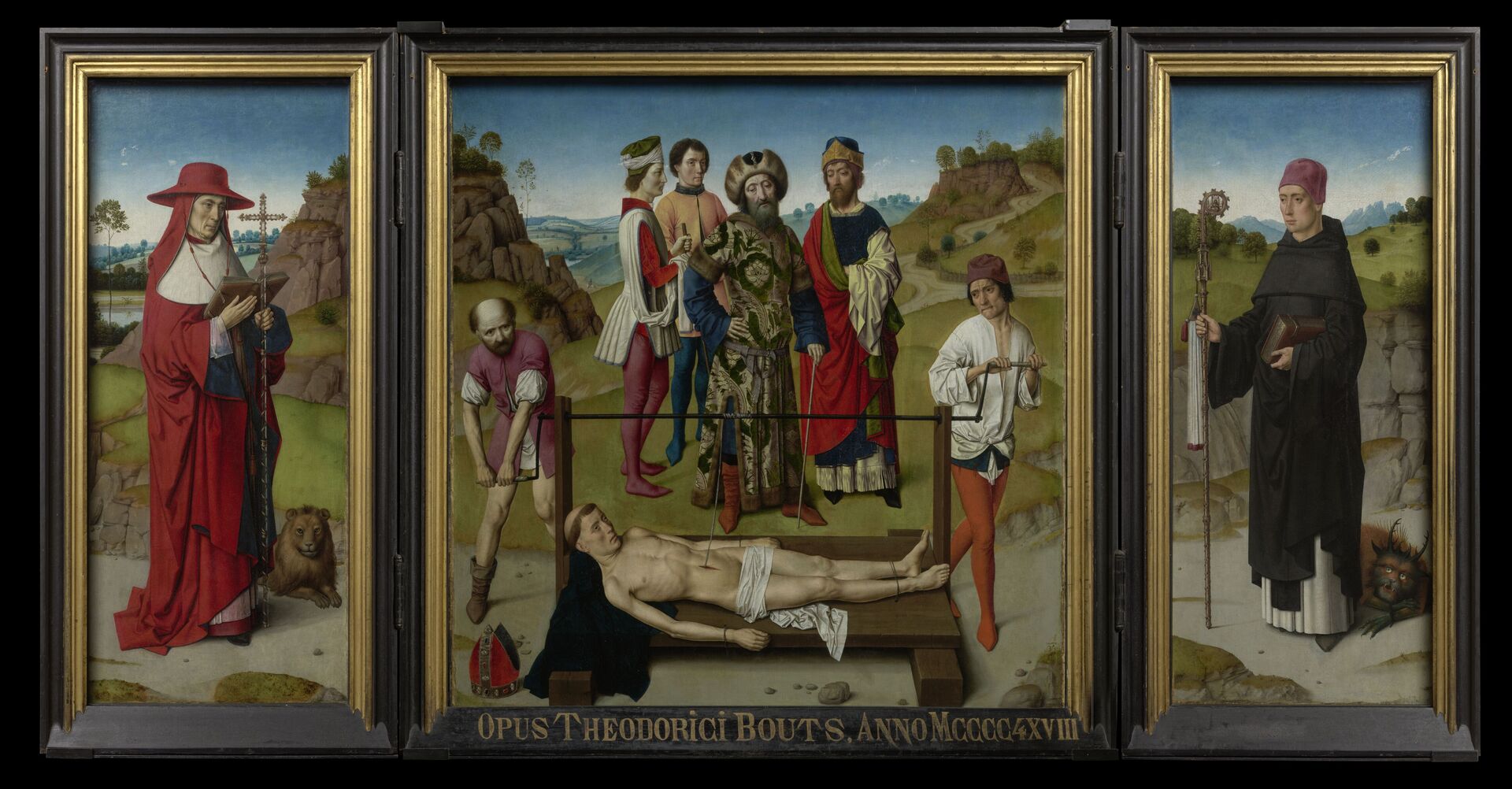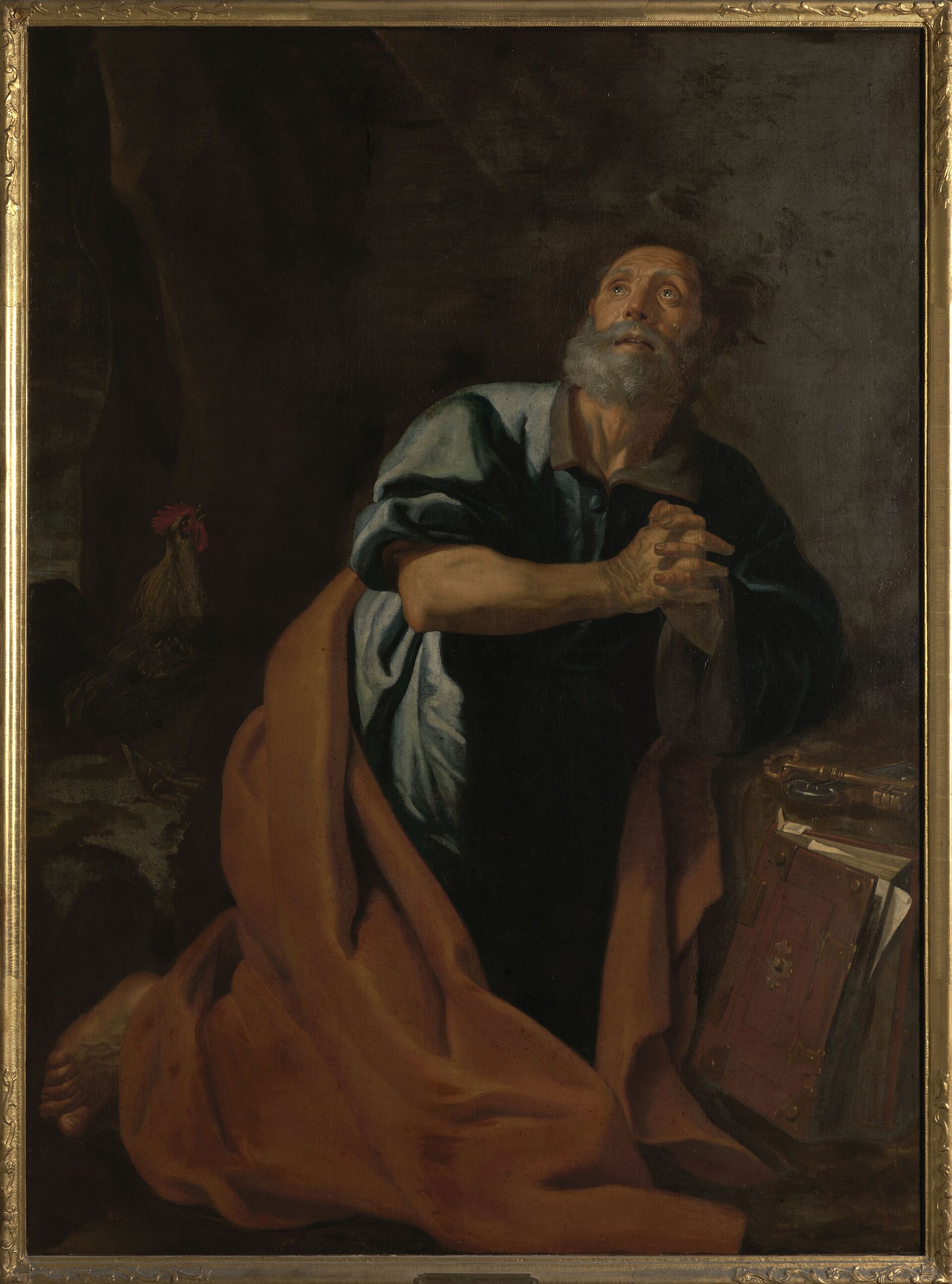Discover how the masterful hands of Dieric Bouts transformed religious narratives into vivid scenes in Saint Peter’s Church in Leuven, creating art of the highest order. If the torture of Saint Erasmus becomes too much for you, it only requires a small step to look at another masterpiece.
Triptych of the Martyrdom of Saint Erasmus, Dieric Bouts
Dieric Bouts completed the Triptych of the Martyrdom of Saint Erasmus around 1460. It focuses on Erasmus, the third century bishop of Antioch, who became a victim of the persecution of Christians and was tortured to death by the Romans. According to legend, an angel managed to free him and he travelled to Italy in a boat. During the trip he ran into a storm and the ship caught fire with blue flames. Erasmus was able to contain the flames and was declared the patron saint of sailors. In effigies, he was shown with a windlass wrapped in ship's rope as an attribute. Although this was meant to symbolize his sea voyage, people interpreted it as a torture device. Bouts painted the windlass as a torture device to remove the intestines from the stomach of Erasmus whilst he was still alive. Not a single drop of blood is spilled. The executioners, judges, saints and the victim look on unfazed. The richly coloured landscapes in the background momentarily distract from the horrors taking place.

Altarpiece of the Holy Sacrament, Dieric Bouts
The Altarpiece of the Holy Sacrament, better known as The Last Supper, is considered a landmark painting of the Low Countries. The triptych remains in Saint Peter’s Church to this day, the location Dieric Bouts originally painted it for. After being commissioned by the Brotherhood of the Holy Sacrament in 1464 he worked on this masterpiece for four years. The central panel depicts the Last Supper with Jesus and his apostles. The four side panels show stories from the Old Testament. Bouts was the first painter to depict the Last Supper on such a monumental scale. The work is testimony to his impressive knowledge and mastery of the rules of perspective. A true Masterpiece!
Nobleman triptych, follower of Rogier van der Weyden
Around 1435, Rogier van der Weyden painted his world famous Descent from the Cross for the chapel of Our Lady of Ginderbuyten, located near what is Tiensepoort today. Nowadays it can be admired at the Prado in Madrid. Van der Weyden painted ten figures imbued with a subdued but powerful sadness set against a background of gold. The bodies of Mary and Jesus seem like mirror images. The profound influence of the Descent from the Cross is demonstrated by the many copies that quickly followed. One of the oldest known copies is the Nobleman’s Triptych dating back to 1443. It was probably created when a Leuven painter was commissioned by Willem Edelheere, a patrician based in Leuven. The work was meant for the altar of his family’s burial chapel in Saint Peter's Church, where it can be admired today.
Relic sculptures, Jan Wynants
Stunning examples of precious metal art can be admired in the two chapels of the south aisle. It is only a small part of the many hundreds of liturgical and devotional objects the church once possessed. These eight masterful relic statues date back to between the early 16th and early 18th centuries. They were made by silversmiths from Leuven and Brussels. Relics are located in the image or in an attribute. The origin of the images is not always known. We know that the sculpture pair of Peter and Paul was made by the Leuven silversmith Jan Wynants in 1618.

Practical information
Accessibility
Easy access for people with disabilities






